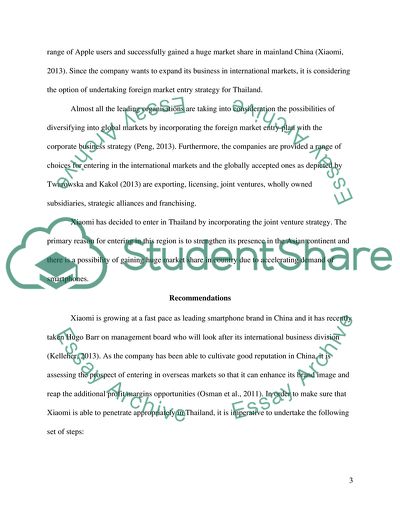Cite this document
(Produce a Market Entry Proposal of of Xiaomi (a fast growing Chinese Essay - 1, n.d.)
Produce a Market Entry Proposal of of Xiaomi (a fast growing Chinese Essay - 1. https://studentshare.org/business/1817091-produce-a-market-entry-proposal-of-of-xiaomi-a-fast-growing-chinese-smartphone-company-in-thailand-country
Produce a Market Entry Proposal of of Xiaomi (a fast growing Chinese Essay - 1. https://studentshare.org/business/1817091-produce-a-market-entry-proposal-of-of-xiaomi-a-fast-growing-chinese-smartphone-company-in-thailand-country
(Produce a Market Entry Proposal of of Xiaomi (a Fast Growing Chinese Essay - 1)
Produce a Market Entry Proposal of of Xiaomi (a Fast Growing Chinese Essay - 1. https://studentshare.org/business/1817091-produce-a-market-entry-proposal-of-of-xiaomi-a-fast-growing-chinese-smartphone-company-in-thailand-country.
Produce a Market Entry Proposal of of Xiaomi (a Fast Growing Chinese Essay - 1. https://studentshare.org/business/1817091-produce-a-market-entry-proposal-of-of-xiaomi-a-fast-growing-chinese-smartphone-company-in-thailand-country.
“Produce a Market Entry Proposal of of Xiaomi (a Fast Growing Chinese Essay - 1”. https://studentshare.org/business/1817091-produce-a-market-entry-proposal-of-of-xiaomi-a-fast-growing-chinese-smartphone-company-in-thailand-country.


